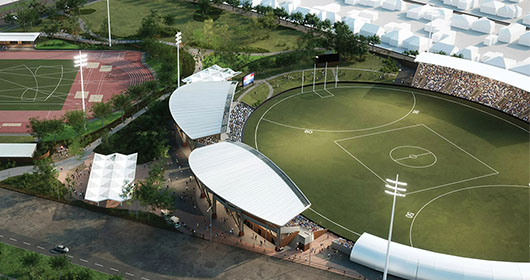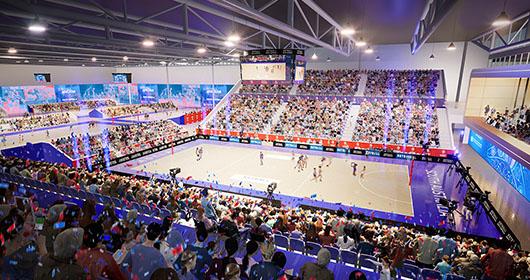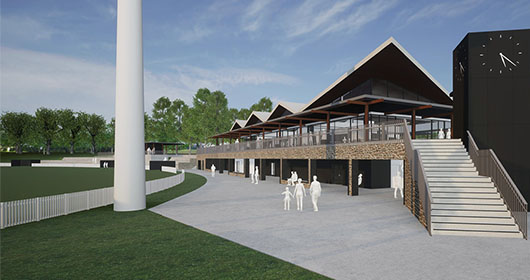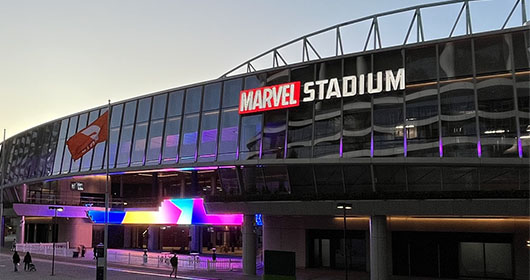Australia/NZ 2023 FIFA Women’s World Cup stadiums
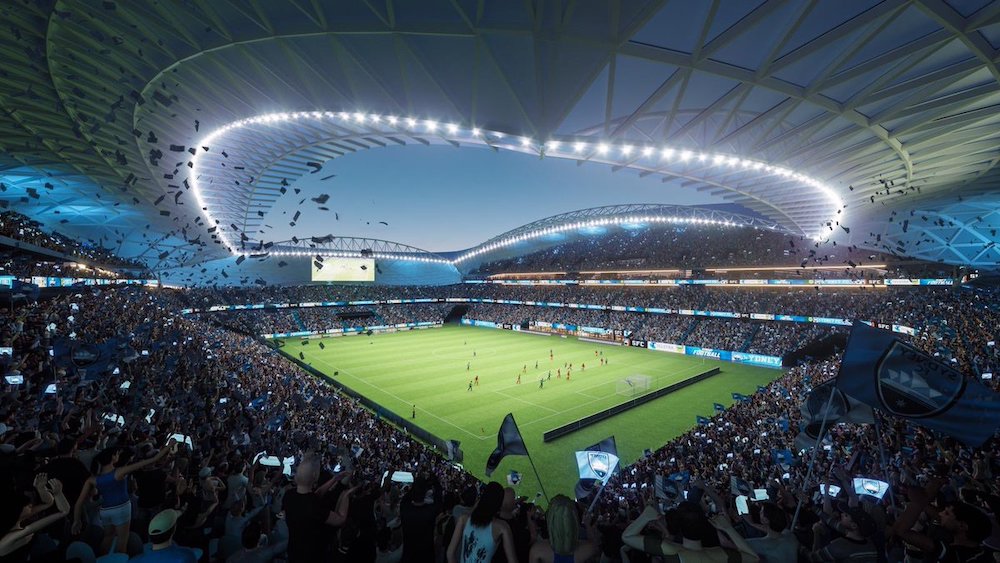
Australia and New Zealand has been announced as co-hosts of the 2023 FIFA Women’s World Cup.
13 stadiums across the two nations where the tournament will be played at were included in the initial bid document, however this has been reduced to 10 after three stadiums were dropped, when the stadiums were announced in April.
The successful bid was announced by FIFA in the early hours of Friday morning, June 26, with the joint-bid beating Colombia by 22 votes to 13. Previously, both Brazil and Japan had withdrawn their respective bids.
It means the countdown can begin immediately to the hosting of a sporting event watched by more than a billion people, and which promises to turbocharge interest in women’s football across the two countries.
Football Federation Australia abandoned initial plans to bid for the tournament alone and instead struck an 11th-hour deal to share the bid before applications officially closed back in December. It will be the first time the FIFA Women’s World Cup has been hosted in the southern hemisphere.
A memorandum of understanding between FFA and NZF creates a partnership that proposes the allocation of match content to a minimum of five stadiums in each of Australia and New Zealand.
Matches will be played across Australia with the exception of Tasmania, ACT and the Northern Territory. NSW features two stadiums, both in Sydney, after the only regional venue incorporated in the bid, Newcastle, was excluded. Tasmania and Christchurch (NZ) were also excluded, after featuring in the initial bid - see the full list below.
The official bid states Stadium Australia (ANZ Stadium) will be the centrepiece of the tournament – hosting the Final and opening game within Australia. Since the official bid was submitted, the major redevelopment of the stadium has been abandoned by the NSW Government and it remains to be seen what upgrades will occur prior to 2023.
Matches will also be played at the brand-new Sydney Football Stadium. All other stadiums are existing, while temporary grandstands will be used at some to increase capacity.
The FIFA Bid Evaluation Report was released on June 10 and demonstrated that Australia and New Zealand would host an exceptional FIFA Women’s World Cup 2023. The report also reports on each stadium submitted for the bid.
Australia and New Zealand’s joint-bid went up against Colombia for the right to host the 2023 FIFA Women’s World Cup. Brazil recently withdrew its bid, as did Japan.
The host cities and stadiums are:
Adelaide (AUS) – Coopers Stadium
Auckland (NZ) – Eden Park
Brisbane (AUS) – Suncorp Stadium
Dunedin (NZ) – Forsyth Barr Stadium
Hamilton (NZ) – FMG Stadium
Melbourne (AUS) – AAMI Park
Perth (AUS) – HBF Park
Sydney (AUS) – Stadium Australia & Sydney Football Stadium
Wellington (NZ) – Sky Stadium
Below is a list of each stadium, as published in the official bid book. Click on the following photos to view more venue info.
AUSTRALIAN WORLD CUP STADIUMS
ANZ Stadium – Sydney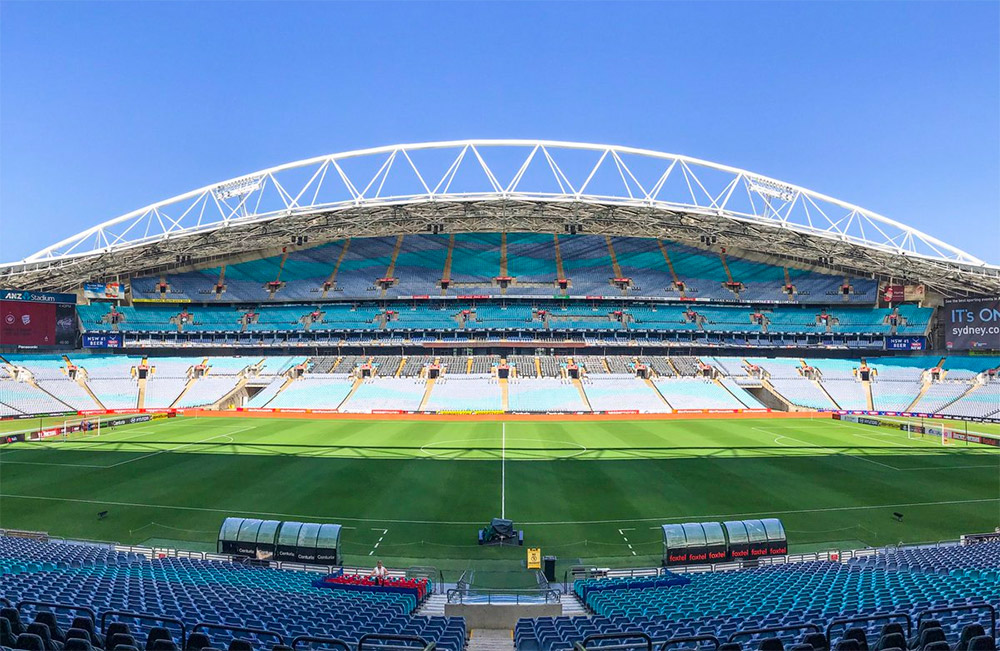
Capacity: 83,500
Potential Matches: Inaugural Match, Group, R16, QF, SF, 3v4, Final
Stadium Australia was the centrepiece of the Sydney 2000 Olympic Games, also hosting the final of the men’s Olympic football tournament, attracting an Australian record of 104,098 spectators for a football match. It was the scene of Australia’s 2005 qualification for the 2006 FIFA World Cup, subsequent World Cup Qualification matches for the 2010, 2014 and 2018 tournaments, and Australia’s victory in the AFC Asian Cup Australia 2015 final. The stadium was set to undergo a major redevelopment in mid-2020 to transform the venue into a permanent rectangular configuration that was to provide spectators with a more intimate football experience, however the plans have since been scrapped due to covid-19. Further information is yet to be announced in regards to what upgrades the stadium will undergo prior to 2023.
Sydney Football Stadium – Sydney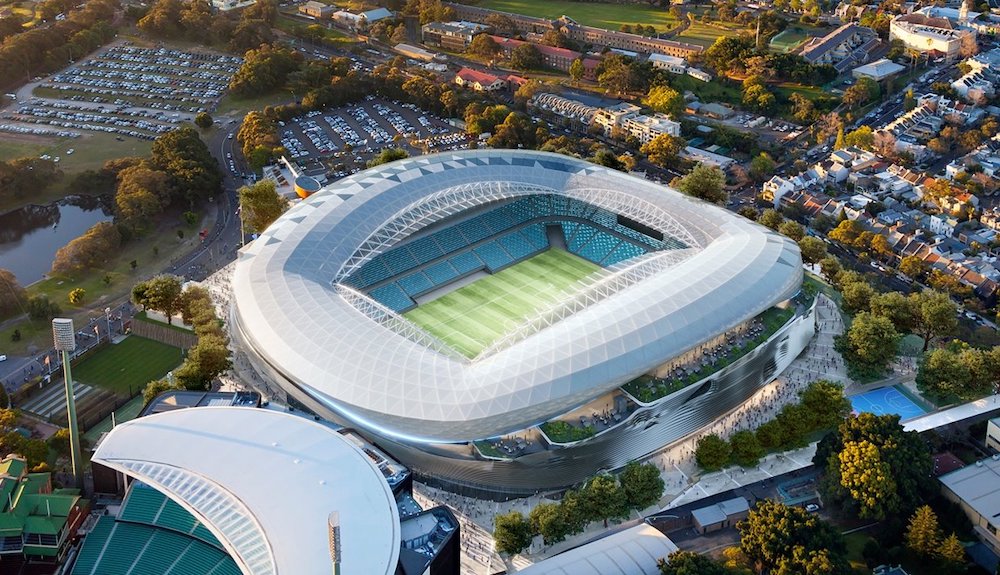
Capacity: 42,512
Potential Matches: Group, R16, QF, SF, 3v4
The Sydney Football Stadium opened in 1988 and has been a celebrated venue for men’s and women’s football for more than three decades. It hosted one of the greatest ever Socceroos’ FIFA World Cup Qualifiers, a 1-1 draw against Diego Maradona’s Argentina, which was played in front of a then record crowd of 43,967 in 1993. It hosted the final of the women’s football tournament as part of the Sydney 2000 Olympic Games, and is the home venue of Sydney FC. The Sydney Football Stadium is currently being rebuilt into a world-class rectangular stadium.
AAMI Park – Melbourne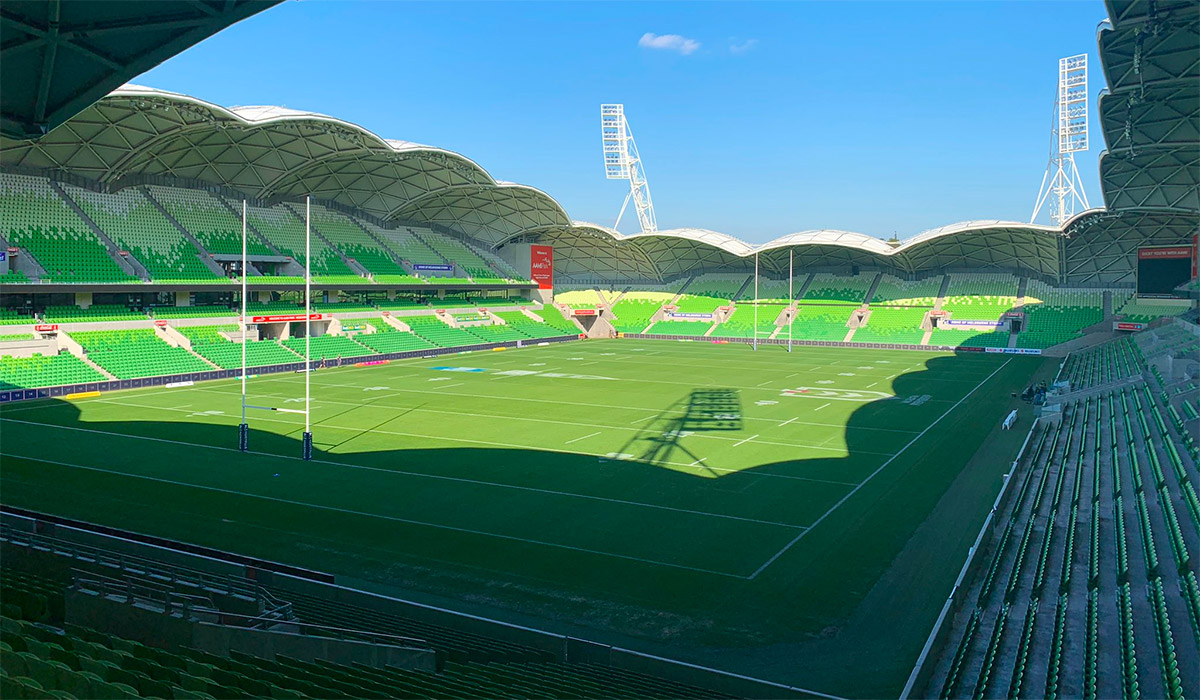
Capacity: 30,052
Potential Matches: Group, R16, QF, 3v4
Opened in 2010, AAMI Park is a dedicated rectangular sports stadium shared by Victoria’s professional football, Rugby League and Rugby Union teams. The stadium’s cutting-edge bio-frame design and geodesic dome roof provides maximum comfort and enjoyment for players and spectators. Located within walking distance of Melbourne’s city centre, the stadium hosted both group stage and knockout matches in the AFC Asian Cup Australia 2015 and is the home venue of Melbourne Victory and Melbourne City.
Suncorp Stadium – Brisbane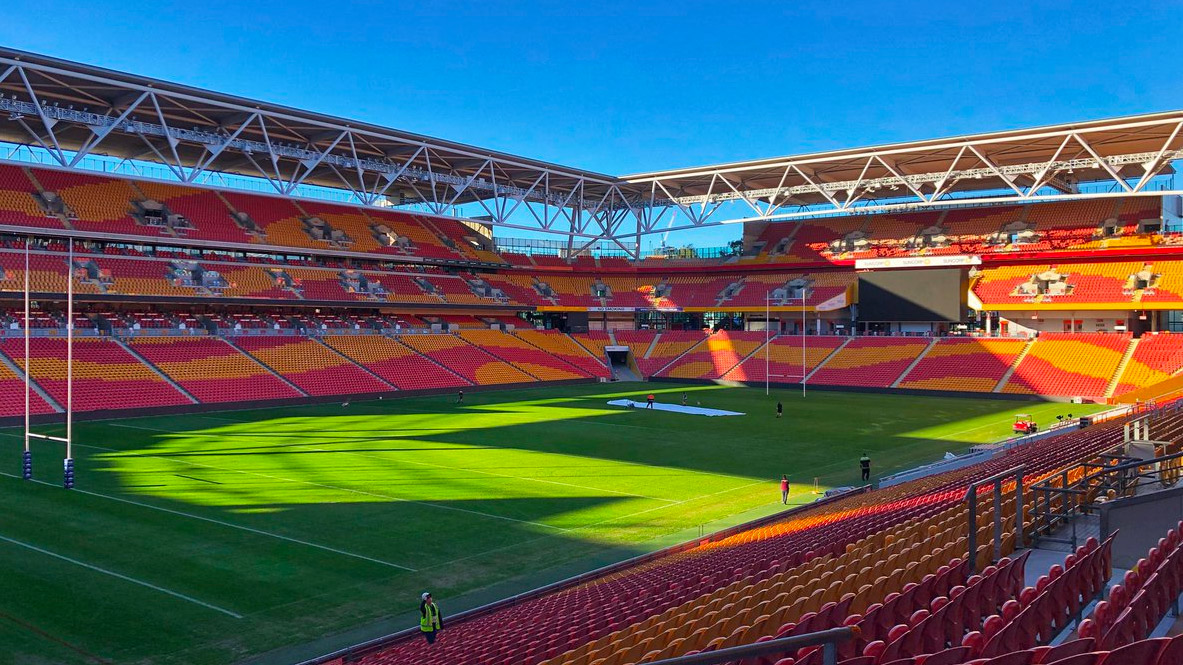
Capacity: 52,263
Potential Matches: Group, R16, QF, SF, 3v4
Located in the inner-city Brisbane suburb of Milton, Suncorp Stadium is widely regarded as one of the best rectangular stadiums in Australia. Since its major redevelopment in 2003, the stadium is the premier Queensland venue for football, Rugby Union and Rugby League. It has been a match venue for several major international events including the Rugby World Cup 2003, the AFC Asian Cup Australia 2015 and the final of the Rugby League World Cup in 2008 and 2017.
HBF Park – Perth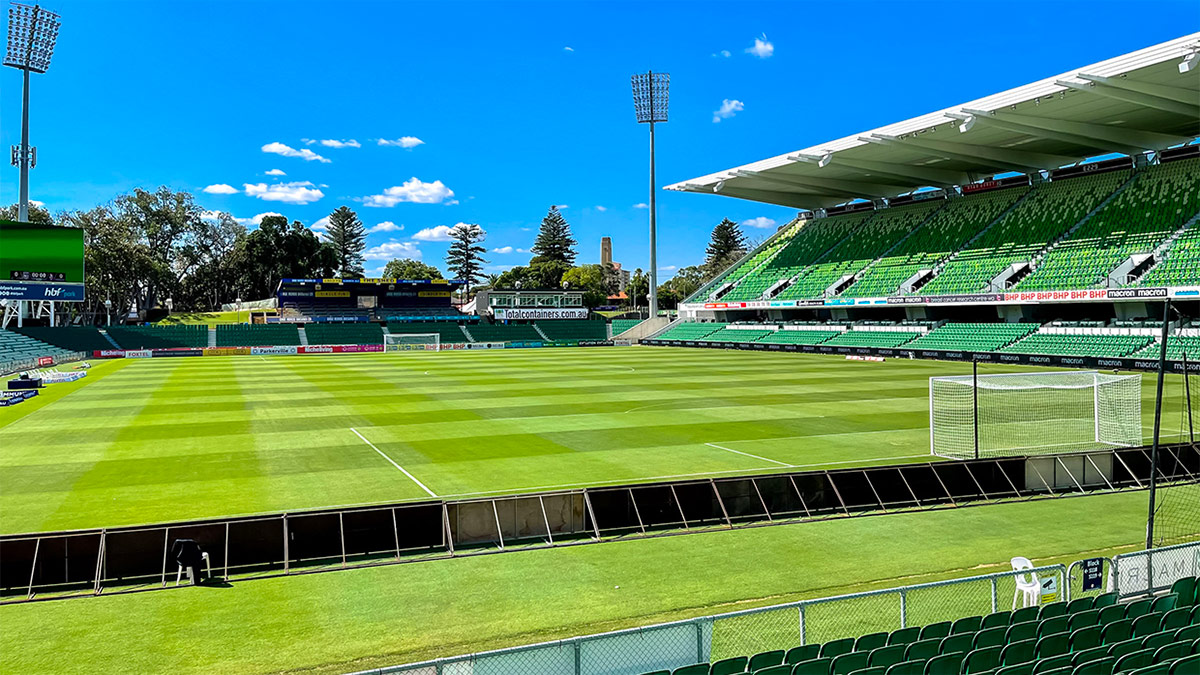
Capacity: 22,225
Potential Matches: Group, R16, QF, 3v4
Located close to Perth’s city centre, HBF Park is the state’s premier dedicated rectangular stadium and the home of Perth Glory. The stadium has hosted major Socceroos and Matildas matches, including 2018 FIFA World Cup Qualifiers and international matches in both Rugby League and Rugby Union. Temporary seats will boost the venue’s capacity.
Coopers Stadium – Adelaide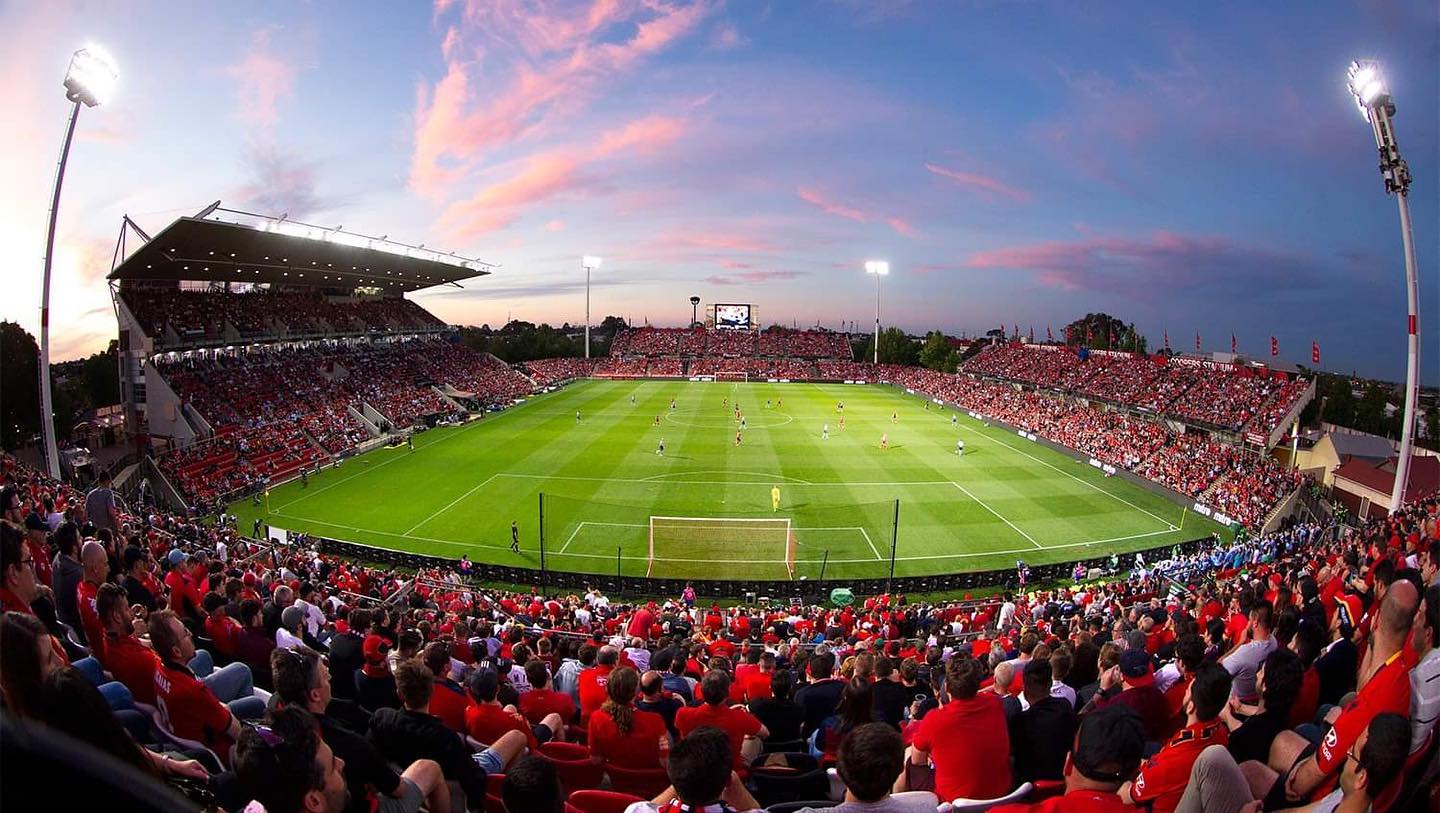
Capacity: 18,435
Potential Matches: Group, R16
Located in the inner-city Adelaide suburb of Hindmarsh, this purpose-built football stadium was redeveloped for the Sydney 2000 Olympic Games, hosting six group stage matches and a quarter-final in the men’s tournament. With a rich football history dating back to the 1960s, the stadium also hosted the AFC Women’s Asian Cup 2006, the AFC Champions League 2008 final and the Oceania OFC Nations Cup 2004. It is the home stadium for Adelaide United. Temporary seats will boost the venue’s capacity as they did for the Sydney Olympics.
NEW ZEALAND WORLD CUP STADIUMS
Eden Park – Auckland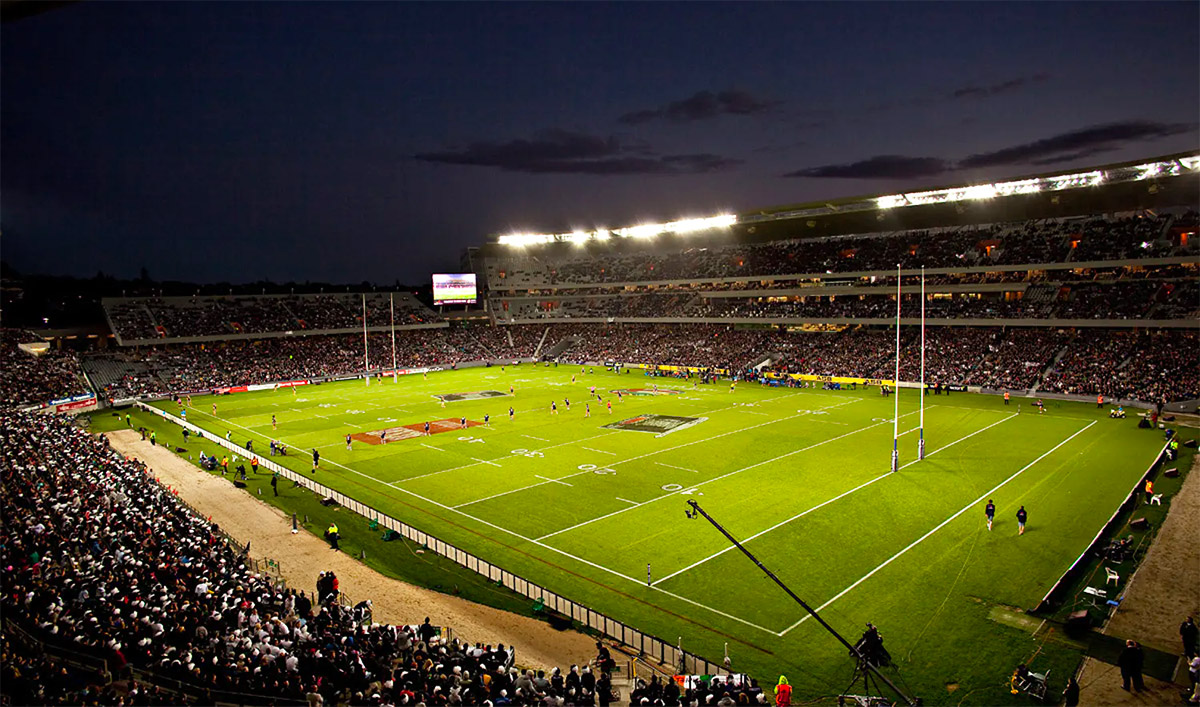
Capacity: 48,276
Official Opening. Potential Matches: Group, R16, QF, SF, 3v4
With a history of rich sporting moments, Eden Park has been New Zealand’s national stadium since 1903. With a capacity of 48,276, events at Eden Park offer an unmatched atmosphere for fans of live sport in New Zealand. Following a major re-development in preparation for the Rugby World Cup 2011, the stadium features world class lighting, audio-visual infrastructure and technology systems. Its upgraded stands include generous multi-purpose hospitality facilities and offers ample accessible facilities for spectators with mobility challenges. Eden Park has hosted the 1950 Empire Games, Rugby World Cup 1987 and opening games and finals of the Rugby World Cup 2011, ICC Cricket World Cup 1992 and 2015, the British and Irish Lions Tour 2017, and many annual All Blacks Rugby Union fixtures. The Park has also hosted several regular season A-League home football matches for the Wellington Phoenix.
Sky Stadium – Wellington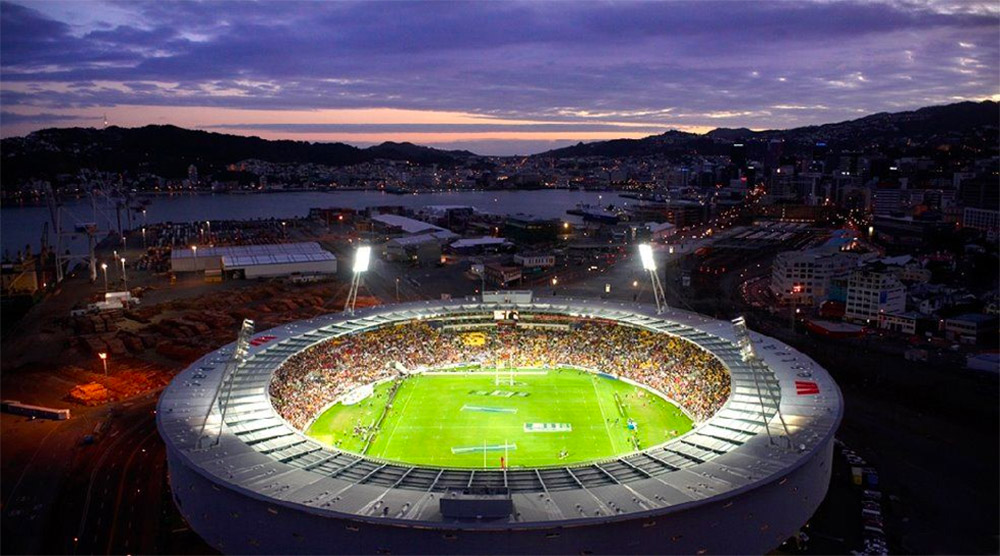
Capacity: 39,000
Potential Matches: Group, R16, QF, SF, 3v4
New Zealand’s second-largest stadium, Sky Stadium was built in 2000. The multi-purpose stadium features an open concourse with views of the playing field and excellent sight lines. The stadium successfully hosted the FIFA U-20 World Cup 2015 and the FIFA U-17 Women’s World Cup 2008 and is the Wellington Phoenix. The stadium has also hosted FIFA World Cup inter-continental play-offs for the New Zealand national football teams, making it the official home of New Zealand Football.
FMG Stadium – Hamilton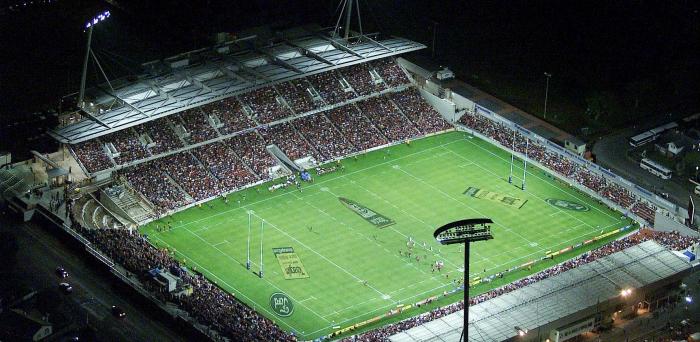
Capacity: 25,111
Potential Matches: Group, R16, QF, 3v4
Completed in 2002, Hamilton’s FMG Stadium continues to build on its proud history by hosting a range of world class international sports fixtures each year, including hosting the FIFA U-20 World Cup 2015 and the FIFA U-17 Women’s World Cup 2008, as well as many professional and international Rugby Union matches. The stadium is an easy walk from Hamilton’s city centre.
Forsyth Barr Stadium – Dunedin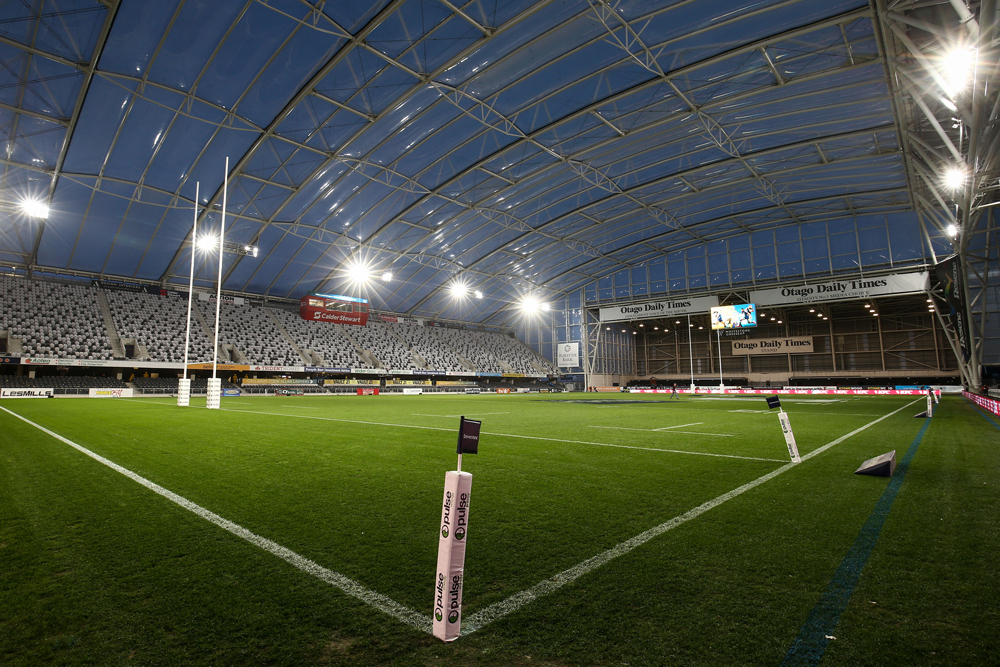
Capacity: 28,744
Potential Matches: Group, R16, QF, 3v4
Forsyth Barr Stadium is a state-of-the-art venue built in 2011 and is the largest and most versatile indoor events arena in New Zealand. A fully roofed, natural turf stadium, the stadium delivers players, media, VIPs and fans comfortable year-round conditions. It is an easy 20 minute walk from the Dunedin’s city centre and is well connected to major bus and train services.
STADIUMS EXCLUDED FROM THE INITIAL BID
McDonald Jones Stadium – Newcastle, AUS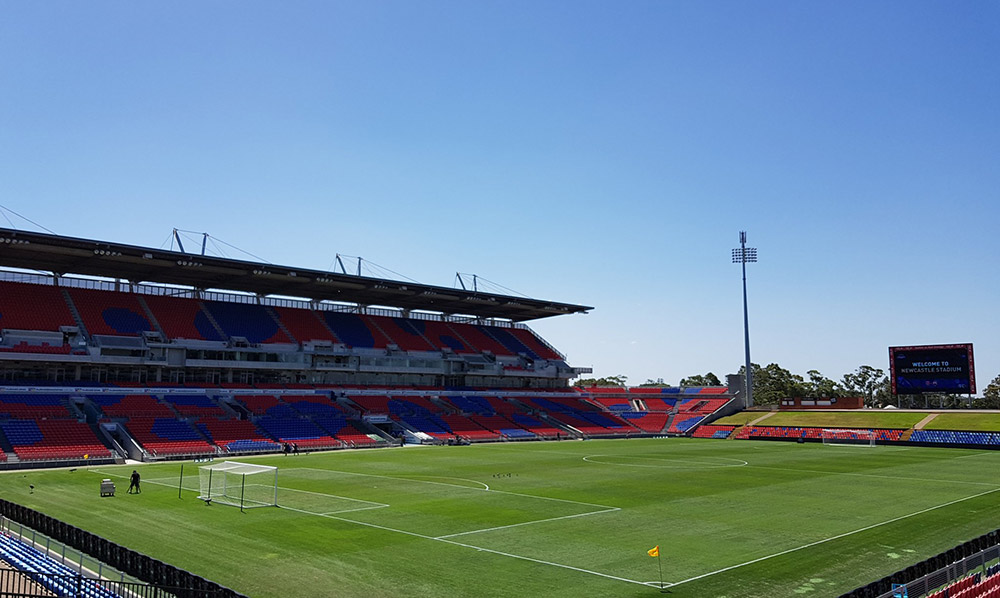
Capacity: 25,945
Potential Matches: Group, R16, QF, 3v4
Officially opened in 1970, McDonald Jones Stadium has seen multiple upgrades during its lifespan, reaching its current configuration in 2011. Home to Newcastle Jets and the Newcastle Knights, the venue’s event calendar features regular professional sporting events. The stadium also hosted AFC Asian Cup Australia 2015 group matches and a semi-final. The stadium has a capacity of 30,000, however that includes grass hills at either end which cannot be used for FIFA tournaments – it’s unknown if these will be blocked off, or replaced by seating, reducing its tournament capacity by 4,000.
UTAS Stadium – Launceston, AUS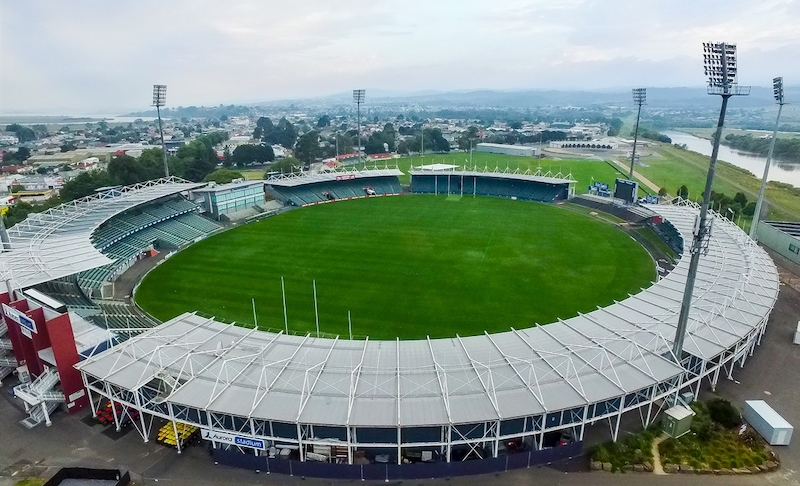
Capacity: 22,065
Potential Matches: Group, R16, 3v4
Launceston is the mainland gateway into the heart of Tasmania. Located within walking distance of the Launceston city centre, UTAS Stadium is perfectly situated as Launceston’s sporting hub. Servicing the northern Tasmanian region, the venue has played host to professional sporting fixtures in national competitions including the A-League and AFL. The venue also hosted a group stage match during the Rugby World Cup in 2003.
Orangetheory Stadium – Christchurch, NZ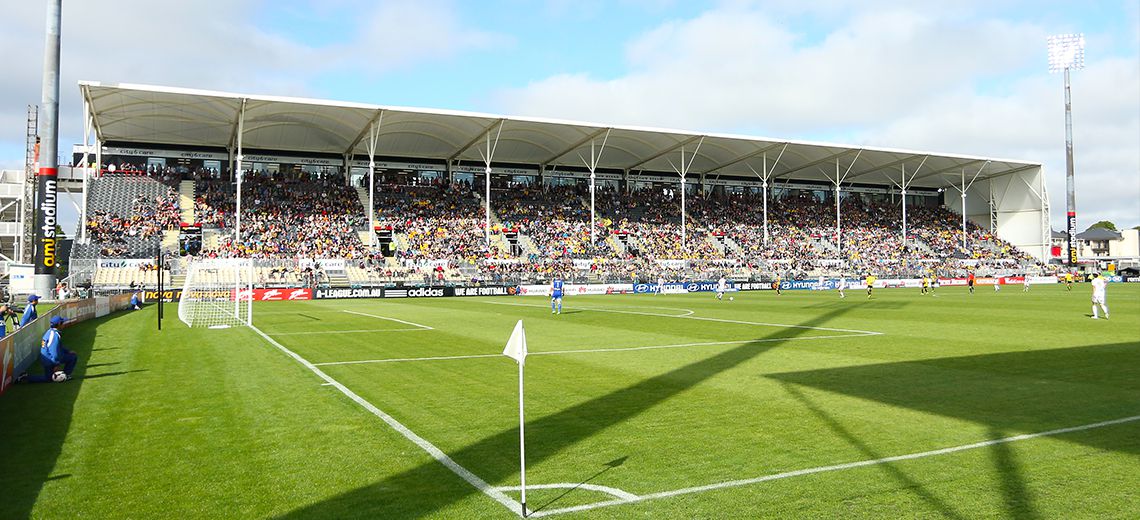
Capacity: 22,556
Potential Matches: Group, R16, QF, 3v4
Christchurch Stadium (Orangetheory Stadium) was built in 2010 following the earthquake that rocked the city, destroying its existing main stadium. Christchurch Stadium hosted the FIFA U-20 World Cup 2015, the British and Irish Lions Tour 2017, 2017 Rugby League World Cup and All Blacks Rugby Union matches. It serves as the venue for provincial and international Rugby Union and Rugby League matches, outdoor concerts and shows.

